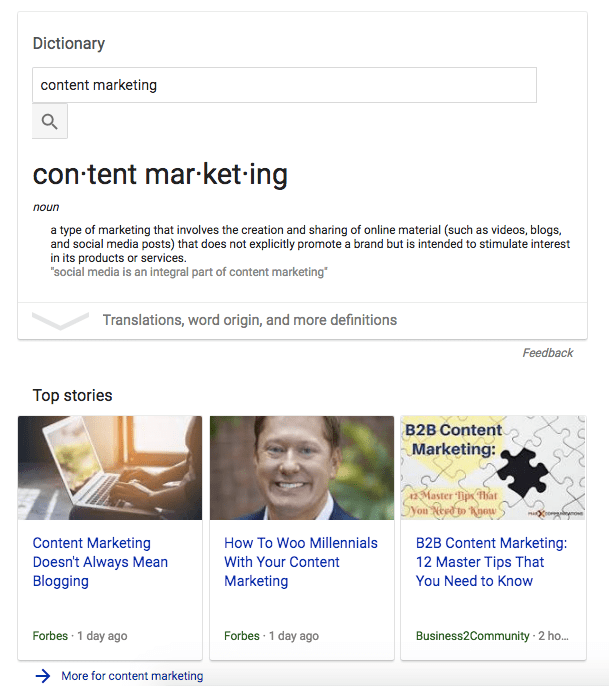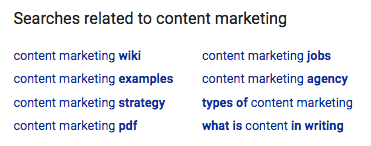Most SEOs face a Catch-22.
Your job is tough. Results take months or even years to bear fruit.
The end goal – traffic, leads, customers – are lagging indicators.
Which means clients and bosses will need to be patient. You need time to identify opportunity gaps and execute.
The problem?
Clients and bosses aren’t patient.
You need six to 12 months. They’re only giving you three. Tops.
Your mission: impossible gets harder when the company is relatively new, unestablished, underfunded, and going after competitive niches. (Read: most realistic clients 90 percent of us work with.)
Time management isn’t just about achieving some mystical, work/life balance nirvana.
It’s about getting results in the shortest amount of time possible.
And increasingly, you can’t do that with good, old-fashioned SEO. You can, but it might take for-ev-er.
Here’s why.
Why You Can’t Rank on a Competitive SERP
Most mortals will never rank on competitive SERPs.
At least, not for a few months or years at best.
Definitely not without a Series A in the bank.
Let’s take a look at a real example, shall we?
You’ll probably start where every good little SEO starts: keyword research.
Feast your eyes on “content marketing.”

This term is super tough for a relatively mid-tail keyword. Turns out, there are lots of marketing nerds out there vying for the same small pot.
We can even scroll down the SERPs to confirm our suspicions.
You’ve got the standard AdWords 4-top, then some Knowledge, and social, before finally making way for a few organic results on the page.

The first three organic sites ain’t no joke, either. Ain’t no pushovers.
Content Marketing Institute dominates the first two. Because they’re SEO magicians? Or because they’ve been building a brand and executing quality content for the better part of a decade?
Then you’ve got Neil Patel who’s also been doing this for a decade, with several multi-million dollar businesses in the marketing arena to show for it.
It’s gonna take something special to dislodge them.
If we had the time, we could go into some long discourse about comparing aggregate link metrics of your site vs. the competition. You know, domain authorities and all that.
But we don’t. (Remember time management?)
So yeah. We’re screwed. No relatively new brand or site is showing up in these organic listings.
This isn’t a three-month proposition. No magic SEO pixie dust is going to work within that already too-short client commitment.
Unless… you think outside the box a little bit.
It’s true that organic results are pretty much out of your grasp. But there are a few alternatives to dominating this SERP without ranking organically at all.
Let’s take each section, one at a time, to show you how this works.
1. AdWords Search Ads
The first section on this SERP is your standard search ads.

Yes. I know that organic click-throughs destroy paid ones.
But a little of something is better than a lot of nothing.
Obviously, this is a competitive term. So the CPCs are probably high. Let’s confirm quick:

Yup. CPC is a little over $25 bucks a piece.
That sounds expensive, right?! ‘Specially when the average B2B benchmark CPC is only $1.64!
Except, here’s the thing.
CPC doesn’t really matter all that much. You have numbers to hit. But if your margins work, you can even bid that CPC up and still make the match work.
For example, you’re selling content marketing services for $10,000 a pop. Maybe that’s spread over a short-term project. Or maybe that’s only $850/month over the course of the year.
Either way, not out of the question.
So let’s do some quick math. Let’s see what it looks like when the CPC almost doubles to $40 bucks a piece.

OK. Not so bad now, right?
Sure, it gets expensive as a percentage of revenue. You’re going to need a healthy ad budget to be that aggressive.
But once again, not out of the question.
I’ve seen a few entrepreneurial companies in not-so-entrepreneurial industries fuel their entire business growth through heavy ad spend like this.
You know, “real” companies with fixed expenses. Ones outside of tech or growth hacking or info-pedaling.
You can be aggressive. Do a little better than break-even on the front. And then make up profit on residuals, recurring incoming, or cross-selling to leverage.
No. It’s not a long-term strategy. But it’s a start.
And most importantly, it will help you uncover long-tail variations that never occurred to you.
Let’s tackle another super competitive keyword, like “WordPress design.”
So you add the usual keywords to your campaign, like “WordPress website design,” and let ‘er rip.
Only one problem.
You bid on keywords. But you pay for search terms.
And many times you’ll discover brand new long-tail variations that cost a lot less.
For example, turns out “WordPress themes for designers” is as popular, but far less expensive.

Now, I am no math savant. However, a trusty online calculator tells me that the first keyword is a 60.79 percent less expensive!
So yeah. Bidding on top of the funnel keywords like “content marketing” or “WordPress design” won’t get you very far in the long run. They’re expensive. And they lack purchasing intent.
But they can also give you much better ideas for which SERPs to tackle next within a few days.
One down, three to go.
2. Top Stories
We see two Knowledge sections on the “content marketing” SERP.
The first is the Dictionary. Swing and a miss.
The second is the News section with “Top stories” underneath.

OK, a few things here.
You could try getting into the “Top stories” section. Tough, but rewarding if you can pull it off.
You could try writing for Forbes. Not easy, but not impossible. (Have you seen some of their stuff lately?!)
You could easily write for Business2Community (the third result in that section). Here’s the contributors’ link. You’re welcome.
Write something awesome (or long, or with a lot of numbers), buy social traffic to boost views, rank.
And if none of those work, you could start stalking. (In a PG way, of course.)
Let’s check out the first Forbes result, first. Largely because the poor guy’s picture in the second one is creeping me out a little bit.

Looks like David Crader wrote this post. It was pretty good!
Gee. I wish there was a way to find out more information about David Crader.
Oh, that’s right. LinkedIn does serve a purpose, after all.
Pull up the handy Sales Prospector in LinkedIn to find Dave’s profile in seconds.

A quick glance already introduces a few openings.
His recent update says it was his first post on Forbes.
So you could always try the lame, “Nice post bro” angle.
Or you could look over to the right-hand side. Looks like my buddy Brad has a friend of a friend who might know Dave.
A single text message and I might have some info by the end of the day.
Otherwise, you could see what events Dave is attending in the near future. You could see what Dave’s favorite sports team is. Whatever. The point is to find common ground that lends for a natural introduction.
Not another god awful cold email that says something along the lines of, “I also wrote this post about content marketing blah blah you should check it out blah blah blah.”
3. Third-Party Review Sites
There is one alternative to weasel your way onto difficult SERPs.
Many competitive niches have strong third-party directories and ranking sites.
These are good for searchers because they often help people compare their options. (As opposed to booking right now.)
Believe it or not, they can be good for brands, too.
You need to get yourself to the top of each.
In travel, there’s TripAdvisor, Yelp, etc. In real estate, there’s like a million with Zillow somewhere near the top.
In the marketing realm, Credo is one example.
Now, the same rules apply. Can you sponsor listings to shoot to the top?
If not, it typically comes down to reviews. The more reviews you get, the higher visibility you’ll see.

I know, not exactly rocket science. But it sounds a helluva lot better than messing with RankBrain for the next six months.
You might not land on the first position of that competitive SERP anytime soon.
But with a little ingenuity, you could be near the top on another site that’s already pulling in a healthy percentage so that you can get a slice of the pie.
4. Long-tail Variations
Way down at the bottom of the SERPs are the related searches.
These are the recommendations based on what other people have already reviewed.
They also tend to be the more specific, long-tail variations that might just be within your grasp.

For example, let’s take “content marketing agency” and repeat the process all over again.

Not easy by any stretch. But infinitely easier than the first one we just looked at.
And you’ll get the extra bump of increased search intent, too.
Now repeat the process.
Conclusion
You care about backlinks, machine learning, blah blah blah.
Clients and bosses care about dolla dolla billz y’all.
The goal is leads. You need to drive new business.
Toiling away on a million long-tail searches that all get 0-10 estimated searches a month could work. If you can wait five years to start driving revenue.
But you don’t. Clients and bosses won’t let you.
That means you need to get creative.
Ditch the old-school, SEO blinders. Look around at what’s happening. What’s evolving.
Because you can often capitalize on new SERP additions like top stories or third-party sites before the competition catches on to what’s happening.
And if all else fails, put that budget into PPC. Start driving revenue, now. Even if it’s a little bit.
So you can buy yourself a little time to get those long-tail variations pulling in enough down the line.
Image Credits
Featured Image: 12019/Pixabay.com
Screenshots by Brad Smith. Taken August 2017.





